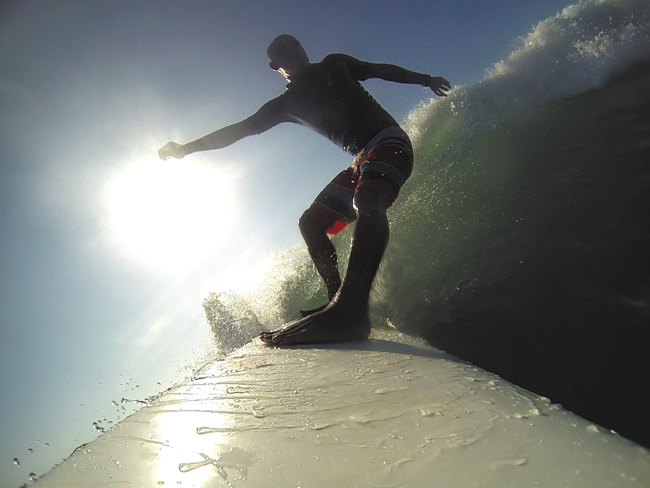Keeping You Fit To Surf

Dr. Spencer Chang is well-suited to talk about preventing surfing injuries
PHOTO COURTESY DR. SPENCER CHANG
When Benjamin Franklin said, “An ounce of prevention is worth a pound of cure,” chances are he wasn’t thinking about surfers and the importance of avoiding injuries.
But the old expression would certainly apply for wave riders and their goal to stay clear of problems in the first place rather than fixing them after the fact.
“He’s absolutely right,” says Dr. Spencer Chang, an orthopedic surgeon at Straub Clinic & Hospital and the orthopedic consultant for professional surfers. “When it comes to sports medicine, many injuries can be prevented.”
Injury prevention is one of the goals of a conference Saturday, Dec. 6, when Straub Clinic & Hospital, an affiliate of Hawaii Pacific Health, presents “Pipeline Surf Medicine Conference” in the Hawaii Room at Turtle Bay Resort.
“It’s a medical conference specifically designed for surfing,” says Chang. “We started it a couple of years ago. At first, it was just a bunch of doctors and different health care professionals getting together to help with injury prevention, and it has grown over the years.
Last year we didn’t have it, so we’re excited to have brought it back this year.”
The surf medicine conference is the brainchild of Chang’s partner Dr. Clay Everline . Everline is a primary care sports medicine doctor and a surfer as well.
“He had the vision that this would be helpful for the community,” says Chang. “We look forward to sharing what we know.”
The conference is open to the public and to doctors specializing in sports medicine and surfing injuries. Chang will address knee injuries in one of the lectures.
“Although I’ve never suffered a knee injury from surfing, I’ve seen many patients who have — it happens!” says Chang. “When it comes to knee injuries, it’s not like football, basketball or soccer, where we see torn ACLs. Most of the time we’re talking about lacerations, where someone slams into a reef or the nose or skeg of a surfboard hits them. Occasionally, we’ll see fractures or surfers who’ve sprained their MCL ligaments.”
Other topics include: * The aging surfer * Mauli Ola Foundation * Surf shoulder * Ankle injuries * Trauma and pre-hospital care
Chang also is an avid surfer and understands firsthand how injuries can happen at any time.
In other words, he practices what he preaches.
“I think we’re covering the gamut from head to toe,” says Chang, a graduate of Iolani School, University of Washington and John A. Burns School of Medicine. “We have a growing surfing community, and the community is much more interested and proactive in terms of health care and prevention. There was a time when many of us didn’t do a lot of cross training or injury-prevention exercises. We now have a better understanding that if we want to surf better and surf longer in life, then we have to do some of these preventive measures. We call it pre-hab.”
Chang says the timing of the event will benefit professional surfers and everyone who calls the ocean their playground.
“I think it’s good to talk about injury prevention,” says Chang, who spends much of his free time surfing at the break Concessions at Ala Moana Beach or off Hawaii Kai. “After volunteering for two years, organizers asked me this year to serve as their consultant. I look forward to working in my new role helping out with ASP” — keeping surfers in the ocean surfing and out of his office.
rkmizutani@gmail.com





